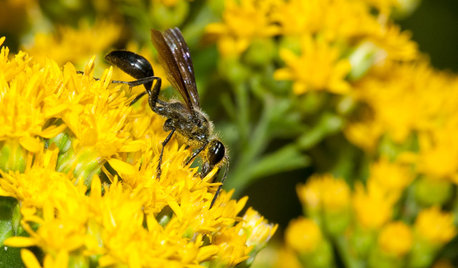Cocoon Bloom.
mendopete
14 years ago
Related Stories

WINTER GARDENINGPruning Secrets for Exquisite Roses
Encourage gorgeous blooms year after year with this time-tested advice on how to prune your rosebush in winter for health and shape
Full Story
GARDENING AND LANDSCAPING11 Garden Retreats for the Creatively Inclined
Finally finish that novel, opera or oil painting you’ve been working on by drawing inspiration from these peaceful retreats
Full Story
DECORATING GUIDESSo Your Style Is: Darkly Romantic
Envelop yourself in mysterious luxury with deep colors, rich textures and unexpected details
Full Story
SAVING WATERHouzz Call: Are You Letting Go of Your Lawn?
Many facing a drought are swapping turf for less thirsty plantings. If you’re one of them, we’d like to hear about it
Full Story
FARM YOUR YARDHello, Honey: Beekeeping Anywhere for Fun, Food and Good Deeds
We need pollinators, and they increasingly need us too. Here, why and how to be a bee friend
Full Story
GARDENING GUIDESMeet the Grass-Carrying Wasp, a Gentle Pollinator of Summer Flowers
These fascinating insects nest in wood cavities and hollow plant stems
Full Story
GARDENING GUIDES6 Steps to Creating Your Butterfly Garden
Encourage these fanciful winged beauties to visit your garden while helping restore their fragmented habitat
Full Story
REGIONAL GARDEN GUIDESCentral Plains Gardener's October Checklist
Fall foliage color and crisp mornings, plus mulching beds and planting spring bulbs, make October a gardener's heaven
Full Story
GARDENING GUIDESGreat Design Plant: Butterfly Milkweed, a Beacon in the Prairie
Vivacious orange flowers for you, nectar for the butterflies and bees. Asclepias tuberosa is worth planting for more reasons than one
Full Story
GARDENING GUIDESBackyard Birds: Invite Entertaining Hummingbirds Into Your Garden
Hummingbirds — unique to the Americas — zip through open landscapes seasonally or year-round. Here’s how to attract them
Full StorySponsored
More Discussions






randomz
11otis
Related Professionals
New Mexico Landscape Architects & Landscape Designers · Battle Ground Landscape Contractors · Bridgeport Landscape Contractors · East Chicago Landscape Contractors · Eureka Landscape Contractors · Hendersonville Landscape Contractors · Morrisville Landscape Contractors · Selden Landscape Contractors · Siloam Springs Landscape Contractors · Browns Mills General Contractors · Delhi General Contractors · Havelock General Contractors · Hutchinson General Contractors · Springfield General Contractors · Waldorf General Contractorssbryce_gw
mendopeteOriginal Author
equinoxequinox
jim08204
smalltowngal
antoniab
mendopeteOriginal Author
smalltowngal
equinoxequinox
smalltowngal
steamyb
jim08204
mendopeteOriginal Author
FrancoiseFromAix
11otis